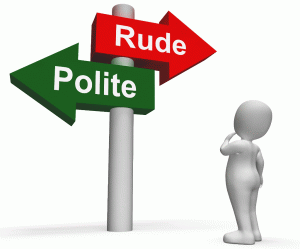There’s nothing like a bit of travel to remind you just how important asking for, getting, and giving directions is. When you’re lost – in the airport, getting into town, or on the city streets, it quickly becomes very clear just exactly how vital this information can really be.
When you’re traveling, the best answer we’ve found for getting directions to where you need to go geographically – just getting out of the parking lot can often be a challenge – is your favorite version of a GPS. By favorite, I mean the one you can figure out how to use! Our favorite is Siri, a personal assistant application for iOS. One of Siri’s many capabilities is a GPS function which pretty much gets you out of trouble – or into it – your preference!
Siri comes already installed on newer versions of the iPhone, making “her” easy to keep with you at all times. Many new cell phones today have some sort of GPS with various capabilities built in, or apps available.
But what if you do not have a GPS with you? How do you get directions? What questions do you ask, and more importantly, how do you ask them in a way that will avoid confusion and get you the answers you need?
If you’re still inside the terminal, it comes right down to reading the signs, which are, hopefully, in a language you can read, or have pictures that help you guess where they are telling you to go.
The second choice is to ask someone. This is where it starts getting more difficult. Asking for directions is an underrated, frequently overlooked skill. Ask the wrong question, or add extraneous information, who knows where you may wind up. When asking for information,
- Remember that “How do I go to…” or “Where do I go to get to…” are very different questions from “Where is….” The former are more likely to get you step-by-step directions, while the latter will most likely get you a general direction wave of the arm, and a turned back.
- If there is a Tourist Aid counter, start there. If not, perhaps a uniformed employee could help. In all cases, be aware of cultural considerations. Bone up a bit on the “rules” for interaction in the places you will be visiting, including the airports or transportation hubs. Make your personal safety a top priority, and use common sense when selecting the person to ask. He or she is not your new best friend, and could turn into quite the opposite. Too much information is not only unwise from a safety point of view, but can also significantly confuse the issue. So provide no information or interaction beyond asking for directions, and any necessary follow-up questions.
- Use only the information your listener needs to be able to give you the answer you need. He or she, with few exceptions, really doesn’t need to know why you need to go there, who you’re going to meet there, or what you plan to do next. And you certainly do not need him or her to know.
- Beyond the usual “How do I go to…” a follow-up question might be necessary to find out what to expect. For example, you might ask, “How do I go to Baggage Claim?”
After getting the answer, your follow-up question might be, “How far is it?” This will help you to decide whether to request a wheelchair, catch a shuttle, or walk. You may have more than one follow-up question. Be sure you understand each answer, and if not, ask it in another way until you do. At the end, repeat all the information back, to be sure you “got it.”
When giving information,
- Provide step-by step directions, eliminating any extraneous comments or information.
- Again, consider your personal safety first. Provide no further information or interaction beyond providing the information your questioner needs to provide the answers you’re looking for.
Bon Voyage! Have a great trip, and let us hear about it!
Gail Tycer offers business writing workshops and presentations; executive coaching, consulting, writing, and editing services. Call Gail at 503/292-9681, or email gail@gailtycer.com to learn more.
If this blog post would be useful to your team, please forward it, or drop us an email, and we’ll send them next week’s post for you automatically.
We appreciate your inquiries and referrals.







